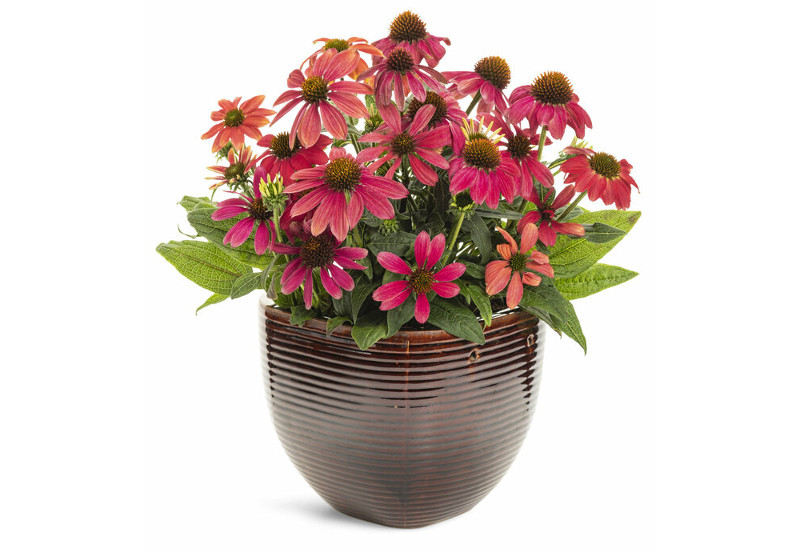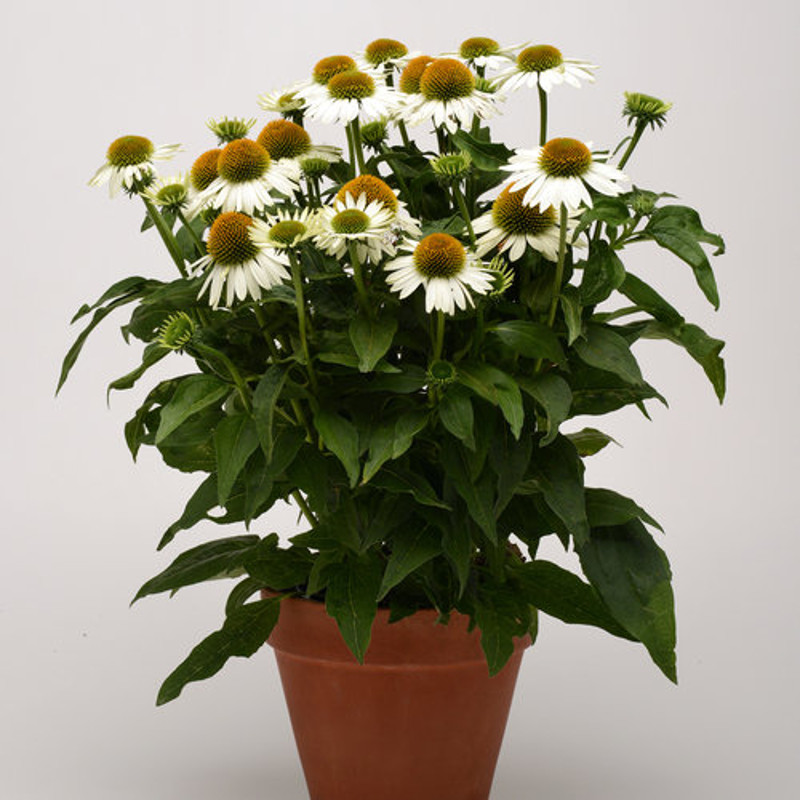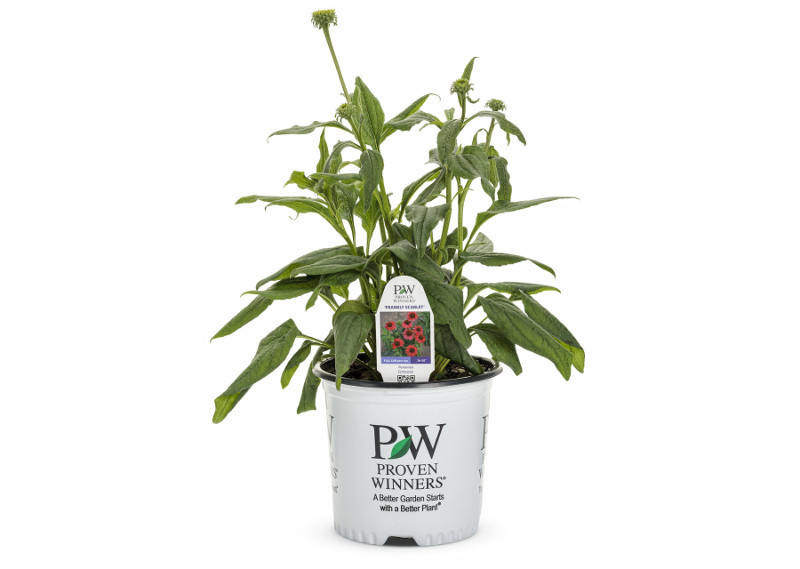Echinacea species, commonly called coneflowers, are long-blooming summer stunners that delight pollinators and humans alike. If you garden on a patio or balcony, or just want to include those bold flowers in a container by your door, you may be wondering if coneflowers grow well in pots? Do they need any special care or conditions? The answers are yes and yes.

Planting Coneflowers in Pots
If you are buying potted stock from a nursery, you can transplant it into a container whenever the soil is loose and loamy, neither frozen nor a river of mud. The ideal time to plant, however, would be spring through mid-summer to avoid the stress of frosts.
Echinacea evolved on the prairie, and so love soaking up sunshine. They perform their best in full sun locations, with four to six hours of direct sun, although they may tolerate very light shade with excellent drainage, afternoon sun, and sufficient heat, perhaps against a west-facing wall.
The first criterion for the planter is drainage holes. Non-negotiable. Next, in choosing the size of the planter, you want to provide sufficient space for fairly deep roots – a minimum of 12” deep and wide for fibrous-rooted Echinacea purpurea and its cultivars, or 24” x 24” for E. pallida, E. angustifolia, or E. tennesseensis, which have strong taproots.

You can choose containers of almost any material – heat-loving coneflowers can thrive even in metal or black plastic but take care that they receive sufficient water. Likewise, porous terracotta provides great drainage so may dry out faster than other materials.
If you live in a cold climate, you’ll want to choose a frost-proof pot, whether ceramic or another type.
Best Soil for Coneflowers in Pots
Echinacea adore aerated soil with good drainage – they cannot tolerate overly wet roots for long. Fill your planter with a soil mix designed to drain well. Avoid mixes with “moisture crystals” which can create puddles of water that could spell disaster for your coneflower. An all-purpose potting mix should be fine, though you can also add rice hulls which are a more sustainable addition than peat moss or polymer crystals that retain some moisture while also increasing drainage.
Some compost or aged manure on top will nourish the mix and act as a light mulch. Heavier mulches like bark chips could be tricky because you don’t want to retain too much moisture. Soggy soil, especially in winter, is a common reason for losing coneflowers. An exception is that in areas with very wet rainy winters, a winter-only mulch of pebbles can help shed some excess water away from the dormant roots.
Caring For Coneflowers in Planters
Choose a spot with at least four hours of direct sun, preferably in the afternoon. Choose a pot deep enough for your specific coneflower variety, with drainage holes. Use an all-purpose potting mix without added moisture crystals.

Watering Coneflowers in Pots
Assuming your pot and planting medium both drain well and your plant is in full sun, 2-3 times a week should suffice for watering, more frequently in times of drought or heat waves. Coneflowers are drought-tolerant, but containers dry out more quickly than garden beds, so strike a balance between letting the plant dry between watering's, but not for too long.
Fertilizing Coneflowers in Pots
Coneflowers are light feeders and are sensitive to over-fertilizing. Topdressings of compost or composted manure once a year in fall or spring should be fine. If your plant is not putting on the growth you expect, try a light application of a balanced fertilizer showing similar N-P-K numbers, such as 5-5-5.
Winter Care for Coneflowers in Pots
The main points to remember about over-wintering your potted coneflower are a hot location such as against a west-facing wall, well-draining soil, and possibly a gravel mulch for winter to dispel excess rain and snow. Also, do not cut back the old stalks of your echinacea – they can help protect it through the winter. Leaving some bonus seed heads up will feed the birds in the winter too!
To “winterize” or protect a coneflower container from freezing, you can wrap the container in mesh wire and fill with dry leaves. It’s important to keep it permeable – plastic wrap or solid material might keep too much moisture in.
Can Coneflowers Be Grown Indoors?
Coneflowers are cold-hardy through USDA zones 3-9 and require some colder winter and night temperatures. As such, they are not good candidates for indoor growing, other than perhaps an uninsulated greenhouse, but good sun would be imperative.
 |
Author Erica Browne Grivas - Published 12-14-2021 |
